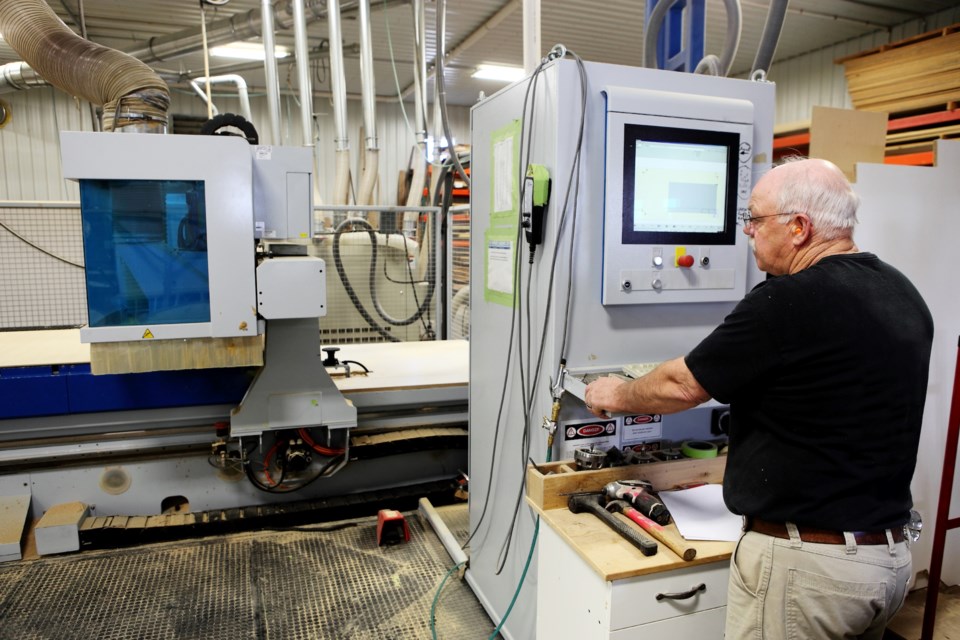NEWS RELEASE
EUP REGIONAL PLANNING & DEVELOPMENT
*************************
SAULT STE MARIE, MICH. - Economic developers from both sides of the St. Marys River are joining forces to attract new investment into the region, narrowing focus on a few key industries that experts believe are well positioned for growth.
Earlier this year, the Eastern Upper Peninsula Regional Planning and Development Commission (EUPRPDC) engaged two firms that specialize in logistics and business development based on the movement of goods and people.
After an exhaustive examination of the region’s transportation facilities and infrastructure, Cambridge Systematics, Inc. and Global Logistics Development Partners (GLDP) came back with recommendations aimed at fostering growth in specific sectors.
“We have formed a collaborative group that includes the economic development organizations and similar agencies in Sault Ste. Marie, Ontario, as well as throughout the EUP,” explained Jeff Hagan, CEO of EUPRPDC. “Different organizations within the group will focus on those strategies in which they see the most promise,” he noted.
The Transportation & Logistics Study is detailed in its implementation planning, outlining how these entities might effectively create a bi-national investment district and provides tangible steps to achieve the district’s formation.
Chris Olson, President of the Chippewa County Economic Development Corporation, pointed to the combined labor pool of more than 100,000 people as an attractive business recruitment tool.
“Working collaboratively the twin Saults can be a formidable force in a highly competitive environment for new business placement. The U.S. also provides Canadian firms entrance into the largest economy in the world,” he noted.
Jeff Holt, Executive Director of the Sault Ste. Marie Economic Development Corporation, found the steps to form a bi-national district helpful. “The strategy took the initial idea of a potential transportation hub and expanded it into an action plan that is feasible and timely,” he said.
Dan Hollingsworth, Executive Director of the Sault (Ontario) Economic Development Corporation, said pursuing joint opportunities makes good sense for the region.
“The most significant take away from this study is the validation that a bi-national investment district, including the EUP region and Sault Ste. Marie, Ontario makes sense. If we can accomplish all of the goals set out for this initiative, we can create a regional opportunity that sets this region apart.”
Beyond establishing a platform to jointly pursue and welcome investment, the Study identifies how the group might capitalize on existing opportunities in several industries already poised for growth.
Lois Yates, a partner at GLDP, explained that there are “special industry niches that exist in the EUP that are being disrupted or changed by technology and the environment and thus are creating opportunities that have not existed or been considered before.”
The wood products industry is one of those industries experts say are situated for growth in the EUP.
“The wood products industry stands out for its large raw material base and its very high commodity flows out of state with very low value creation for the economy,” the study points out. Enhancing value would mean attracting investment into pressure treated lumber, wood thermal insulation, and mass timber production."
Steel is another area of interest, thanks to the close proximity to Algoma (formerly Essar Steel) just across the river.
The study points out that “Sault Ste. Marie, Michigan, with its direct transportation connectivity to the Essar Steel plant, has an opportunity to attract the investment of metal manufacturing firms to the EUP to take advantage of this rich raw material as well as the locational advantages of its excellent business climate.”
Continuing the theme of building on existing opportunities, experts also pointed to the cold weather testing industry as one worthy of further investment. With technological changes in the auto industry, particularly the advent of autonomous vehicles, the need for winter testing will outstrip the available testing centers.
Lumber manufacturing, specialty metals manufacturing and cold-weather testing may have been the specific industries identified, but the plan goes further into outlining how new property and infrastructure assets might be developed and provides additional insight into the warehousing needs connected to becoming a regional distribution hub.
“The Transportation and Logistics Study is unique in that it outlines detailed steps and strategies to attracting investment and building infrastructure,” Hagan said, reflecting on the impact of the report.
Understanding how the region competes for investment and how it rates compared to other regions is vitally important. On critical aspect in site selection, according to Yates, “is the ability to demonstrate that your location can provide an overall supply chain management advantage including cost, time and reliability of getting the product to market. By zeroing into EUP’s niche markets, that unique market proposition can be made.”
As EUPRPDC continues to shepherd the work of the study forward, the CEO says his organization will pursue funding for the aforementioned specialty steel and wood products opportunities in the 2019 Regional Prosperity Initiative grant process.
The Sault Ste. Marie EDC also has identified steel as an industry they will focus on, in part because their SmartZone and Incubator facilities house several emerging businesses that depend upon the steel industry. At the Chippewa County EDC, Olson indicated the wood products industry would be of particular focus.
On the Canadian side of the border, both steel and wood products have caught the attention of Hollingsworth and his peers.
“We already have a large steel manufacturing and remanufacturing sector. We also have a forest products sector made up of timber and engineered wood products manufacturing and significant government-based forest science and R&D capability. We believe there are opportunities within our sectors on the Canadian side that can benefit our local companies and create potential opportunities in Sault Ste. Marie, Mich. as well,” he explained.
*************************
